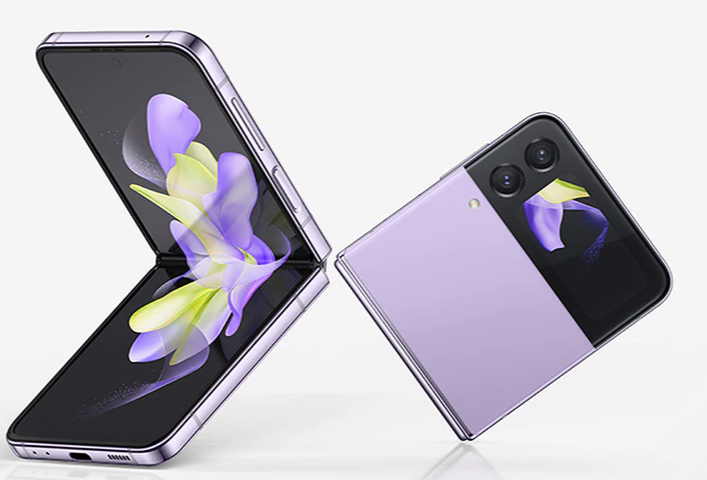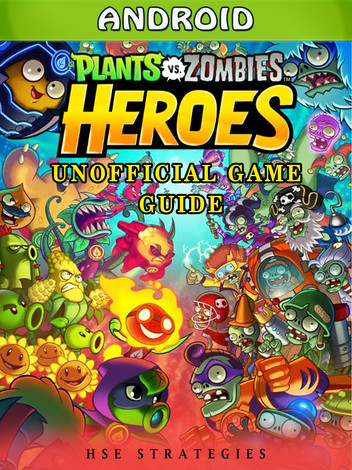
The Future is Unfolding: How Triple-Fold Android Gadgets Will Redefine Mobile Computing
The world of Android phones has been in a constant state of evolution, but few innovations have captured the imagination quite like the advent of foldable displays. What began as a futuristic concept, a novelty for the most enthusiastic early adopters, has rapidly matured into a distinct and compelling category of mobile devices. We’ve seen the market bifurcate into two primary form factors: the compact, pocket-friendly “flip” phone and the productivity-focused, tablet-like “fold” phone. However, the relentless march of technological progress waits for no one. The latest Android news and industry whispers suggest we are on the cusp of the next great leap in mobile hardware—a move beyond the single fold and into the realm of multi-fold and even triple-fold devices. This isn’t just an incremental update; it’s a potential redefinition of what a smartphone can be, promising to merge the portability of a phone with the expansive canvas of a multi-monitor setup. This article delves into the technical complexities, software challenges, and transformative potential of this next generation of foldable Android gadgets.
The Evolution of Foldable Form Factors: From Flip to Multi-Fold
To understand where we’re going, it’s crucial to appreciate where we are. The current foldable market is a fascinating tale of two distinct philosophies, each catering to different user needs and desires. This foundation is the launchpad for the more ambitious designs looming on the horizon.
The Clamshell Revival: Compact and Convenient
The “flip” style foldable, epitomized by devices like the Samsung Galaxy Z Flip series and the Motorola Razr, resurrected the beloved clamshell design of the early 2000s and infused it with modern technology. Its primary value proposition is portability. When closed, it transforms a large-screen smartphone into a small, pocketable square, protecting the main display and minimizing its footprint. The outer cover screen has evolved from a simple notification ticker to a genuinely useful mini-display for checking messages, controlling music, and even taking selfies with the main cameras. This form factor appeals to users who prioritize style, convenience, and the satisfaction of snapping a phone shut. It solves the problem of ever-growing smartphone sizes without sacrificing screen real estate when needed.
The Book-Style Powerhouse: Productivity Unleashed
On the other end of the spectrum is the “fold” style, pioneered by the Samsung Galaxy Z Fold series and now joined by competitors like the Google Pixel Fold and OnePlus Open. These Android phones unfold horizontally like a book to reveal a massive, tablet-sized inner display. This design is built for productivity and immersive media consumption. The ability to run multiple apps side-by-side in a spacious layout transforms multitasking from a cramped compromise into a fluid, desktop-like experience. For power users, professionals, and avid content consumers, these devices represent the pinnacle of mobile capability, effectively combining a flagship phone and a mini-tablet into a single, cohesive package. They answer the call for more screen real estate for complex tasks, from editing spreadsheets to reviewing presentations on the go.
The Next Frontier: Pushing Beyond the Single Hinge
While both current form factors are successful, they represent just the first chapter in the foldable story. The industry is now looking toward the next logical evolution: adding more folds. The concept of a triple-fold, or a device with two hinges, is gaining traction as the next major innovation. This design aims to bridge the gap between the book-style foldable and a small laptop, offering an even larger, more versatile display that can be configured in multiple ways. This leap isn’t merely about making the screen bigger; it’s about fundamentally changing how we interact with our most personal computing devices.
Engineering the Future: The Technical Hurdles of Multi-Fold Devices

Creating a reliable and elegant device with two hinges and three display panels is an engineering challenge of immense proportions. The complexity increases exponentially compared to single-hinge designs, demanding breakthroughs in mechanics, materials science, and component packaging. Overcoming these hurdles is the key to unlocking the potential of the next generation of Android gadgets.
The Hinge Mechanism: A Symphony of Complexity
The hinge is the heart and soul of any foldable phone. Current high-end foldables use incredibly complex “waterdrop” or “teardrop” hinges with dozens of interlocking parts to allow the flexible screen to curve gently inside the hinge, minimizing the sharpness of the crease. Now, imagine doubling that complexity. A triple-fold device requires two such mechanisms that must work in perfect harmony. Engineers must solve for:
- Durability: The device must withstand hundreds of thousands of fold cycles across both hinges without failure. The mechanical stress is distributed across two points, requiring even more robust materials and design.
- Synchronization: The hinges must operate smoothly, whether opened individually or together, providing a consistent and satisfying user experience.
- Bulk: Adding a second hinge and a third chassis section inevitably adds thickness and weight. The primary engineering goal will be to create a dual-hinge system that is strong yet incredibly slim to keep the device pocketable. A potential solution could be a “G-fold” or “Z-fold” design, where panels fold in opposite directions to create a more compact shape.
Display Technology: Beyond Ultra-Thin Glass
The display itself faces a new level of stress. A triple-fold design means the single, continuous panel must endure being bent in two separate locations. This puts immense strain on the layers of the display stack, especially the Ultra-Thin Glass (UTG) that provides a premium feel and some measure of scratch resistance. Manufacturers will need to develop next-generation UTG that is even more flexible and durable or explore advanced polymer films that can better withstand the repeated stress of a dual-fold system. Furthermore, the issue of the crease becomes twofold. While current technology has made creases less prominent, a device with two of them will test user tolerance. Minimizing the visual and tactile impact of both creases will be a critical measure of success.
Battery Life and Component Placement
A larger screen requires more power. One of the biggest challenges will be integrating enough battery capacity to power a massive, multi-panel display without making the device unwieldy. Current foldables often use a dual-battery system, with a cell in each half of the device. A triple-fold would necessitate a three-part battery system or a highly unconventional battery shape. Engineers must distribute this power source across the three chassis sections while maintaining thermal efficiency and a balanced weight distribution. The placement of other critical components—the processor, cameras, speakers, and modems—also becomes a complex 3D puzzle, as they must be strategically positioned within the segmented body without compromising performance or creating thermal hotspots.
A New Paradigm for Android: Software and Use Cases for Triple-Fold Phones
A revolutionary piece of hardware is only as good as the software that powers it. The true potential of a triple-fold phone will be unlocked by how the Android operating system and its ecosystem of apps adapt to a three-panel canvas. This new form factor opens the door to multitasking and interaction models that are simply impossible on current devices.
The Ultimate Multitasking Machine
The most immediate and compelling use case for a triple-fold device is unparalleled multitasking. While current book-style foldables excel at running two apps side-by-side, a three-panel layout blows the doors wide open. Imagine a workflow previously reserved for a desktop with multiple monitors, now available in your pocket.

- Real-World Scenario for Professionals: A project manager could have a video conference running on the left panel, a shared project plan or Gantt chart open on the center panel, and a private chat with their team on the right panel—all simultaneously visible and interactive.
– Case Study for Creatives: A video editor could use one screen for the raw footage timeline, the main screen as a preview monitor, and the third screen for editing tools and effects controls. This mimics a professional editing suite on a mobile device.
This level of parallel information processing could genuinely allow a triple-fold phone to replace a laptop for many road warriors and on-the-go professionals.
Software Adaptation: The Android Challenge
Making this vision a reality requires significant software innovation. Google has already laid the groundwork with Android 12L and subsequent updates, which introduced optimizations for large-screen devices, including an intelligent taskbar and improved split-screen functionality. However, these systems are primarily designed for single-fold or tablet displays. A triple-fold device will require a new layer of software intelligence.
- Window Management: Android’s window manager will need to be enhanced to gracefully handle three-app layouts, easy app-dragging between panels, and intuitive window resizing.
- Developer APIs: Google and device manufacturers will need to provide developers with new APIs and design guidelines to encourage the creation of apps that can intelligently adapt to a three-panel configuration. Without third-party app support, the hardware’s potential remains locked away.
- Common Pitfall: A common pitfall would be simply stretching a single app across all three screens, which would be awkward and inefficient for most applications. The real power lies in multi-app, multi-window workflows, and the OS must make this the default, intuitive behavior.
Navigating the New Foldable Frontier: Is a Triple-Fold Phone for You?
As with any bleeding-edge technology, the first generation of triple-fold Android phones will not be for everyone. They will represent the absolute pinnacle of mobile tech, with a price tag and a set of compromises to match. Understanding the pros and cons is key to assessing their place in the market.
Potential Advantages
The upsides are clear and compelling for a specific type of user. The primary advantage is the sheer, unadulterated productivity potential. The ability to manage three full-sized applications at once on a single portable device is a game-changer. It offers a true tablet-replacement experience that even current book-style foldables can’t fully match. For tech enthusiasts and early adopters, the “wow” factor and the experience of owning a piece of the future will be a major draw.
Inevitable Drawbacks and Considerations
The path to this future will be paved with early-adopter challenges.
- Exorbitant Cost: These devices will combine multiple complex hinges and a massive, advanced display, making them some of the most expensive consumer electronics on the market.
- Durability Concerns: More moving parts inherently mean more potential points of failure. The long-term reliability of a dual-hinge system will be a major question mark for consumers.
- Bulk and Weight: Despite engineering efforts, these devices will inevitably be thicker and heavier than any smartphone today, pushing the limits of pocketability.
- Software Immaturity: Early software experiences may be buggy, and it will take time for the majority of apps to be fully optimized for the new form factor.
Target Audience and Market Impact
Initially, the target audience for triple-fold phones will be niche: high-level executives, financial traders, tech developers, and prosumers who demand the absolute most from their mobile devices and are willing to pay a premium for it. However, their impact will be felt across the entire “Android Phones” market. Like concept cars, they will showcase the future, pushing boundaries and driving innovation that will eventually trickle down to more mainstream devices.
Conclusion: A New Chapter in Mobile Computing
The journey from the first candy bar smartphone to the potential of a triple-fold device has been remarkable. We are standing at an inflection point where the very definition of a “phone” is expanding. The concept of a multi-fold device is the next logical step in the convergence of the smartphone, tablet, and laptop. While significant engineering and software challenges remain, the industry’s drive toward more versatile and powerful form factors is undeniable. These next-generation Android gadgets promise to unlock new levels of productivity and creativity, transforming our pockets into true multi-monitor workstations. The future isn’t just foldable; it’s multi-dimensional, and it’s unfolding right before our eyes.



